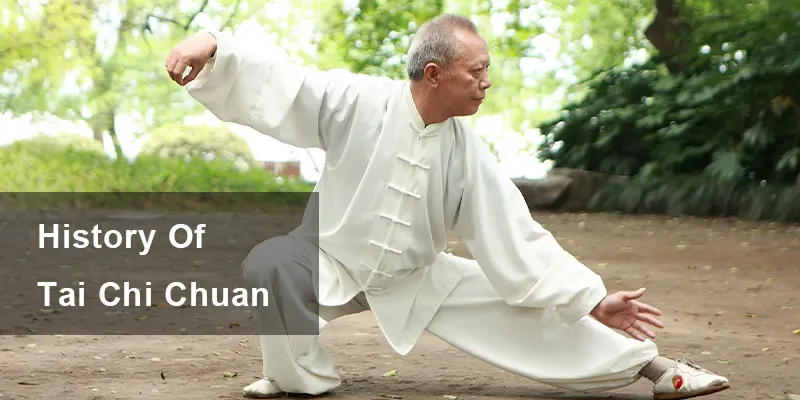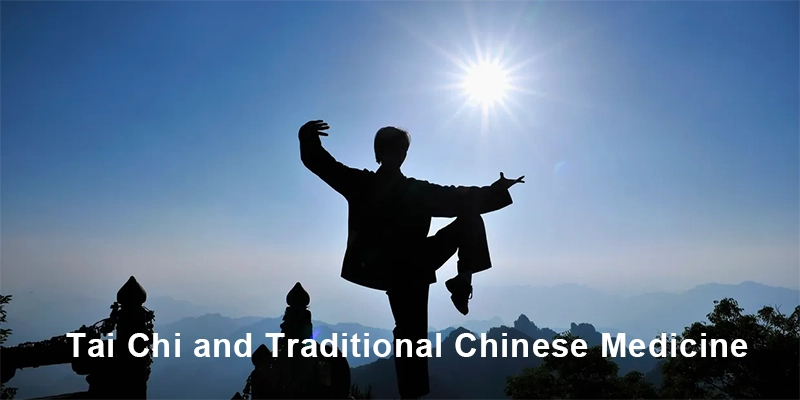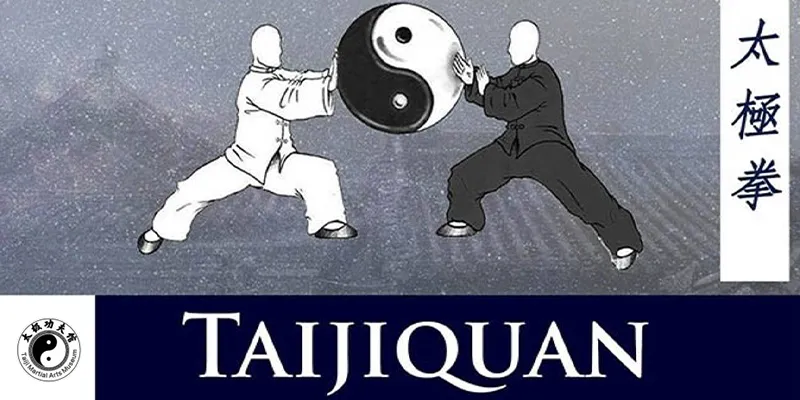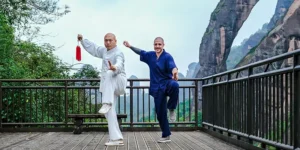Have you ever wondered how Tai Chi changed from ancient combat to today’s wellness practice? Tai Chi moves in your morning park hide 500 years of Wushu secrets.
This article walks you through its origins in Chen Village, the rise of styles like Yang and Wu, how philosophy shaped its moves, and some key figures in Tai Chi Quan. Whether you’re into martial arts or health benefits, there’s a twist for you!

Tai Chi History And Origins
Tai Chi Quan originated in China, but where exactly did it emerge? This section gives you an overview of Tai Chi’s creator and birthplace.
During the Qianlong era of the Qing dynasty, Wang Zongyue wrote The Treatise on Tai Chi Quan, formally naming the martial art. Over time, multiple legends regarding its origins emerged: one claims it was created by Zhang Sanfeng; another attributes its creation to Xu Xuanping during the mid-8th century; while others assert it originated with Chen Bu from Chenjiagou Village in Henan province during the early Ming dynasty.
Until August 21, 2007, during the Fourth International Tai Chi Quan Exchange Festival. At an official ceremony in Chenjiagou Village, Wen County, the General Administration of Sport of China unveiled a plaque designating the site as the “Birthplace of Chinese Martial Arts – Tai Chi Quan.” This marked the state-level recognition of Chenjiagou as Tai Chi Quan’s place of origin.
Tai Chi and Traditional Chinese Medicine
If you wish to learn how Tai Chi Quan evolved from battlefield combat to a daily practice for health and wellness, you’ve come to the right place. This part mainly lets you understand how Tai Chi is combined with traditional Chinese medicine.

The healing effects of Tai Chi Quan stem from the Traditional Chinese Medicine (TCM) principle that “illness arises when Qi is blocked.” The practice aims to stimulate the body’s meridian system, enhancing organ function.
Tai Chi’s each move harmonizes opposing forces: expansion and contraction, inhalation and exhalation. The slow, rhythmic movements regulate blood circulation, calm the mind, and align with TCM’s holistic emphasis on balancing the body. For example, in the Qing dynasty, Tai Chi Quan began to be used to treat ailments such as arthritis and hypertension.
In the 20th century, Chinese hospitals integrated Tai Chi Quan with Qigong for rehabilitation. Modern research has confirmed its benefits for Parkinson’s disease, chronic pain, and immune function. Adaptations, such as wheelchair-friendly Tai Chi, have also emerged.
Today, organizations like the World Health Organization (WHO) promote Tai Chi Quan for elderly fall prevention, while mixed martial arts (MMA) fighters incorporate its footwork into training. This ancient practice thus bridges wellness and combat, tradition and modernity.
Major Styles In Tai Chi Chuan History
This section explores the rise of its primary styles: Chen, Yang, Wu, and Sun.
Chen Tai Chi Chuan
In the 17th century, Ming dynasty general Chen Wangting blended battlefield techniques with Daoist philosophy in Chen Village, Henan Province. The Chen-style he founded combined explosive power with slow, fluid movements. For centuries, it was exclusively passed down within the Chen family.
Later, outsiders like Yang Luchan absorbed these secrets, driving the art’s spread beyond the village.
Yang Tai Chi Chuan
In the 19th century, Yang Luchan, a poor farmer, secretly learned Chen-style Tai Chi Quan by eavesdropping on Chen Changxing’s lessons. After mastering it, he moved to Beijing and modified the Chen style—removing jumps and heavy strikes to suit the weaker, rich students. This gentler, slower iteration became known as Yang Tai Chi Quan.
Wu Tai Chi Chuan
Wu Yuxiang (1812–1880), a scholar and disciple of Yang Luchan, integrated Yang style Tai Chi Quan with classical texts like the Tai Chi Classics. His Wu Tai Chi Quan emphasized precise footwork and compact movements, gaining popularity among intellectuals.
Sun Tai Chi Chuan
Sun Lutang (1861–1932), a master of Xingyiquan and Baguazhang, founded Sun Tai Chi Quan in the 1920s. His forms blended agile footwork (mimicking “monkey steps”) with open-palm strikes. Characterized by higher stances and Qigong-like breathing techniques, Sun-style became widely favored among seniors and rehabilitation patients.
The Philosophical Foundations of Tai Chi Quan
Tai Chi Quan is not merely a slow-motion exercise; its core lies in ancient Chinese philosophy. This section reveals how Taoism, Confucianism, and the dualism of Yin-Yang shaped its principles.

The core philosophy of Tai Chi Quan originates from Taoism. Practitioners do not oppose force but instead emulate water. Movements follow circular arcs to dissolve attacks, embodying the Tao Te Ching’s teachings.
Confucianism, with its emphasis on ritual, influenced Tai Chi Quan’s structured forms. Precise angles and orderly postures reflect Confucian ideals of harmony and discipline, cultivating mental rigor. Even today, tai chi prioritizes ceremonial practice and reverence for master-disciple transmission. Early Tai Chi Quan was strictly taught within families (e.g., Chen Village), mirroring the Confucian virtue of filial piety, where knowledge passes from parent to child.
Every Tai Chi Quan posture embodies the interplay of Yin and Yang. Transitions between these states regulate the flow of Qi and blood, resonating with the cyclical philosophy of the I Ching. In partner practices like Push Hands, Yin-Yang principles teach practitioners to remain sensitive and responsive.
Key Figures In Tai Chi History
This section highlights individuals who transformed family martial arts into universally practiced disciplines, blending combat, philosophy, and health.
Chen Wangting
- Combining Shaolin martial arts, Daoist Qigong, and breathing techniques from the Huang Ting Jing to create the earliest form of Tai Chi Quan.
Yang Luchan
- Yong Luchan promotes Chen-style Tai Chi Quan to broader audiences, developing the soft, flowing movements of Yang-style Tai Chi Quan.
Wu Yuxiang
- Founded Wu/Hao-style Tai Chi Quan, emphasizing complex movements and the cultivation of internal energy.
Sun Lutang
- Established Sun Tai Chi Quan, blending Baguazhang’s agile footwork with Xingyiquan’s spiraling motions. Promoted Tai Chi Quan as a “dynamic meditation” for longevity and authored A Study of Tai Chi Quan (1919), the first book detailing its health benefits.
Zheng Manqing
- Zhang Manqing created a simplified 37-posture Yang-style form for busy urban people. Introduced Tai Chi Quan to New York in 1964, teaching figures like Robert W. Smith and novelist Arthur Miller.
Chen Fake
- Chen Fake restored Chen-style Tai Chi Quan’s reputation by accepting public challenges and defeating wrestlers, boxers, and martial artists.
Fu Zhongwen
- Systematized Yang Chengfu’s 108-posture form into the globally standardized 85-posture routine. Authored The Art of Tai Chi Quan, preserving Yang family traditions during China’s Cultural Revolution.
Chen Xiaowang
- Founded the World Chen Xiaowang Tai Chi Association, training coaches in over 60 countries. Worked with scientists to validate Tai Chi Quan’s efficacy in improving balance and strength.
Dr. Paul Lam
- Dr. Paul Lam developed Tai Chi for Arthritis (1997), endorsed by the CDC and Arthritis Foundation. Launched online platforms like the Tai Chi for Health Institute, reaching over 5 million learners.
FAQs
Did Tai Chi Quan originate as combat or wellness practice?
Tai Chi Quan was born from martial arts but evolved into a wellness practice due to cultural and political shifts.
Originally, Chen Wangting, founder of Chen Tai Chi Quan, combined Shaolin techniques, Daoist Qigong, and tactical combat methods. Martial arts—like fajin and joint locks—were core. Later, Tai Chi Quan turned to health wellness, particularly during the Communist China era, where it was redefined as a “mass movement” to distance it from feudal associations with violence.
Why are there so many variations of the same form?
Variations arise from lineage splits, regional adaptations, and practical needs.
For example, Yang Luchan modified Chen-style for Qing dynasty royalty, creating the slower, larger-frame Yang-style; Wu Yuxiang developed Wu/Hao-style with compact movements to suit scholarly refinement; and the western coach Dr. Paul Lam’s Tai Chi for Arthritis.
How does Tai Chi Quan differ from Shaolin Kung Fu?
Tai Chi Quan and Shaolin Kung Fu differ fundamentally in philosophy, movement style, and training focus.
- Tai Chi Quan is rooted in Daoist principles of softness, yielding, and harmonizing Yin-Yang energies, prioritizing internal energy (qi) cultivation. Shaolin Kung Fu emphasizes discipline, direct action, and external power.
- Tai Chi Quan uses slow, flowing motions to develop sensitivity, balance, and internal strength, often described as “moving meditation.” Shaolin Kung Fu features explosive, fast-paced techniques and rigid stances, emphasizing physical agility and combat efficiency.
- Tai Chi Quan integrates health preservation with martial arts like fajin. Shaolin Kung Fu is based on combat readiness, conditioning the body through rigorous exercisess, forms (taolu), and external strength training.
Is Tai Chi Quan linked to Buddhist practice?
No. Tai Chi originated mainly from Taoism, but was also influenced by Buddhism.
Chen Wangting integrated Daoist internal practices into early Tai Chi. Some breathing techniques may overlap with Zen meditation, but this is coincidental.
So, Chen-style incorporates Shaolin Tongbeiquan techniques; its philosophy remains Daoist.
What weapons are traditionally used in Tai Chi training?
Traditional Tai Chi weaponry enhances coordination, energy flow (qi), and martial application, while reinforcing the art’s core principles of balance, precision, and fluidity. Key weapons include:
- Straight Sword
- Broadsword
- Spear
- Pole/Staff
- Tasseled Weapons
Historically, weapons training preserved martial skills, but modern practice often focuses on health, artistry, and meditative flow.


